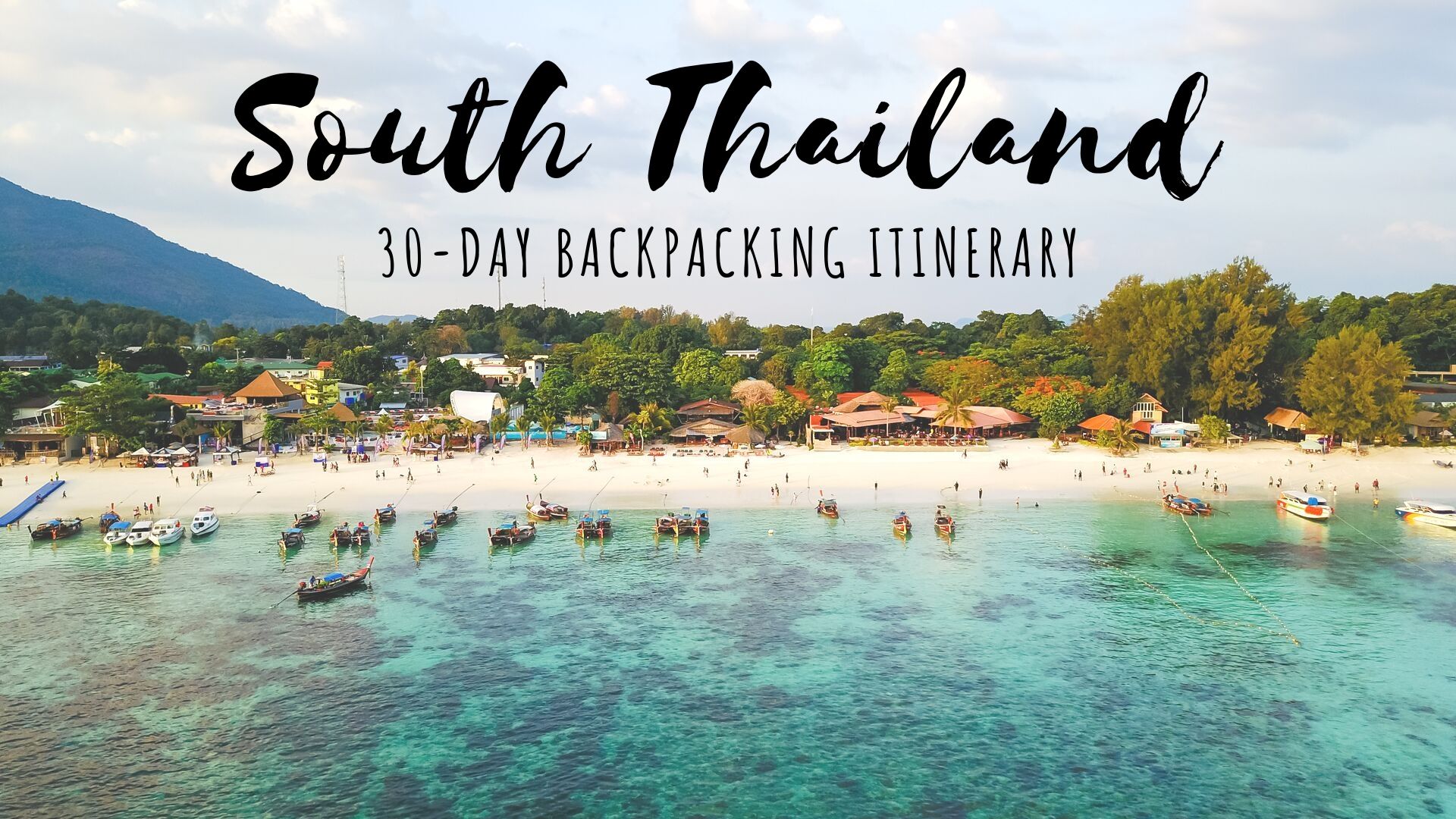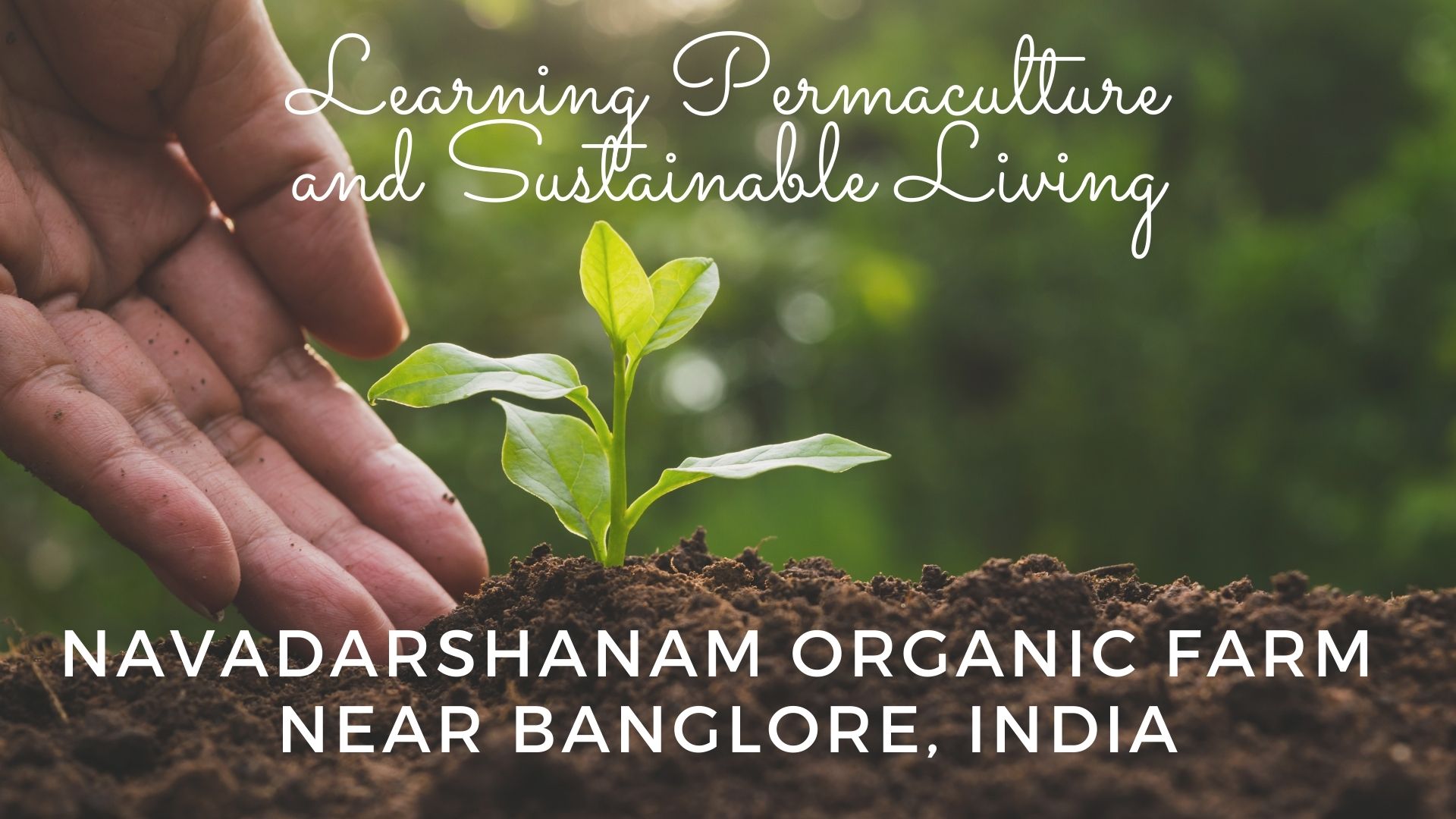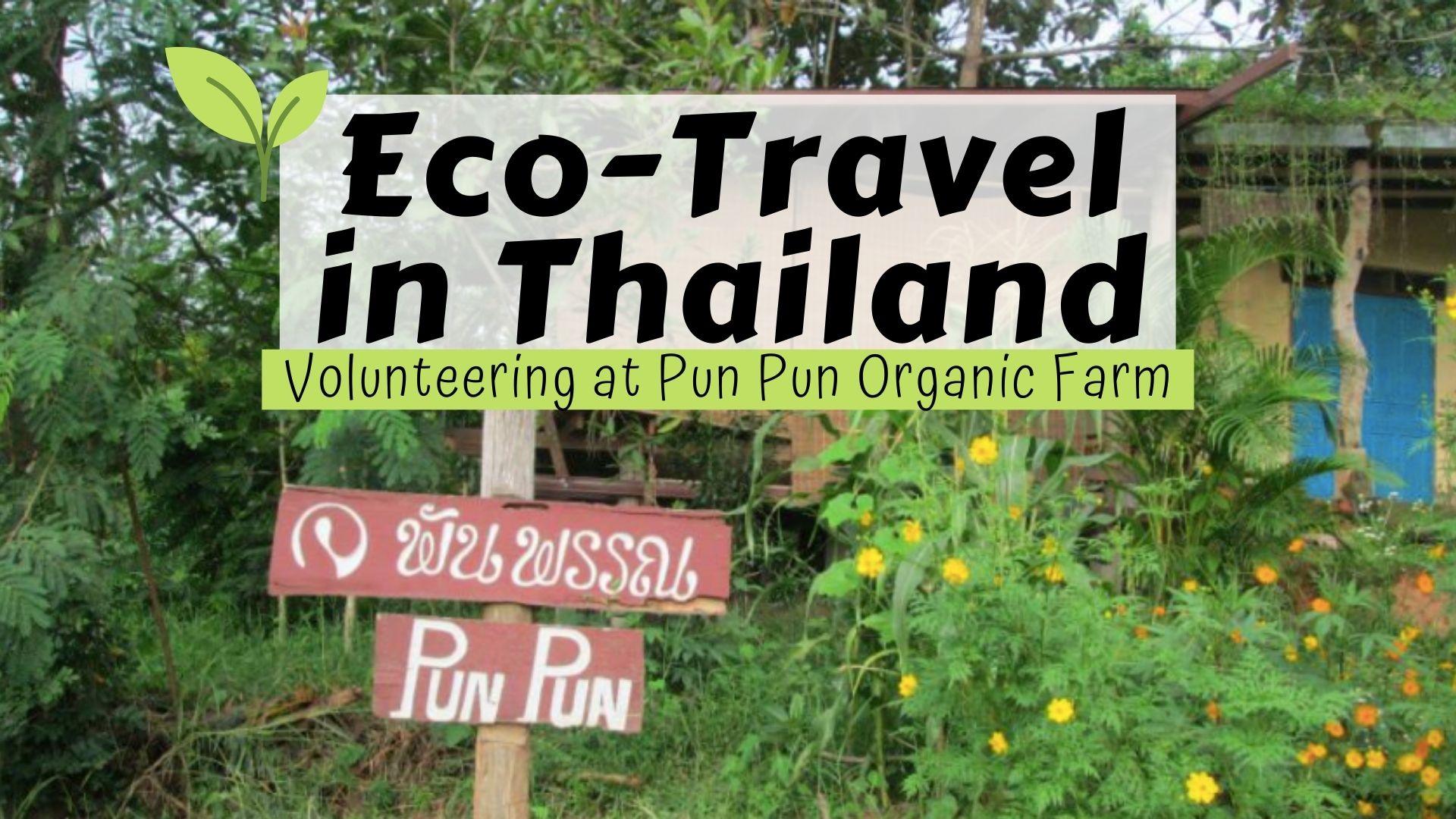After trekking the Annapurna Circuit in Nepal, I had a hard time tearing myself away from the familiarity of Pokhara to get back on the road. After contemplating my next move, I bought a bus ticket to Lumbini, known as the Birthplace of the Buddha. It is a UNESCO World Heritage site, and a sacred pilgrimage ground for Buddhists of all sects.
It cost 750 rupees ($6 US) and 9 hours over windy, uneven mountain roads on a crowded local bus to reach Lumbini town from Pokhara. I didn’t realize it at the time, but I arrived exactly when celebrations for Buddha’s birthday were beginning in the Lumbini.
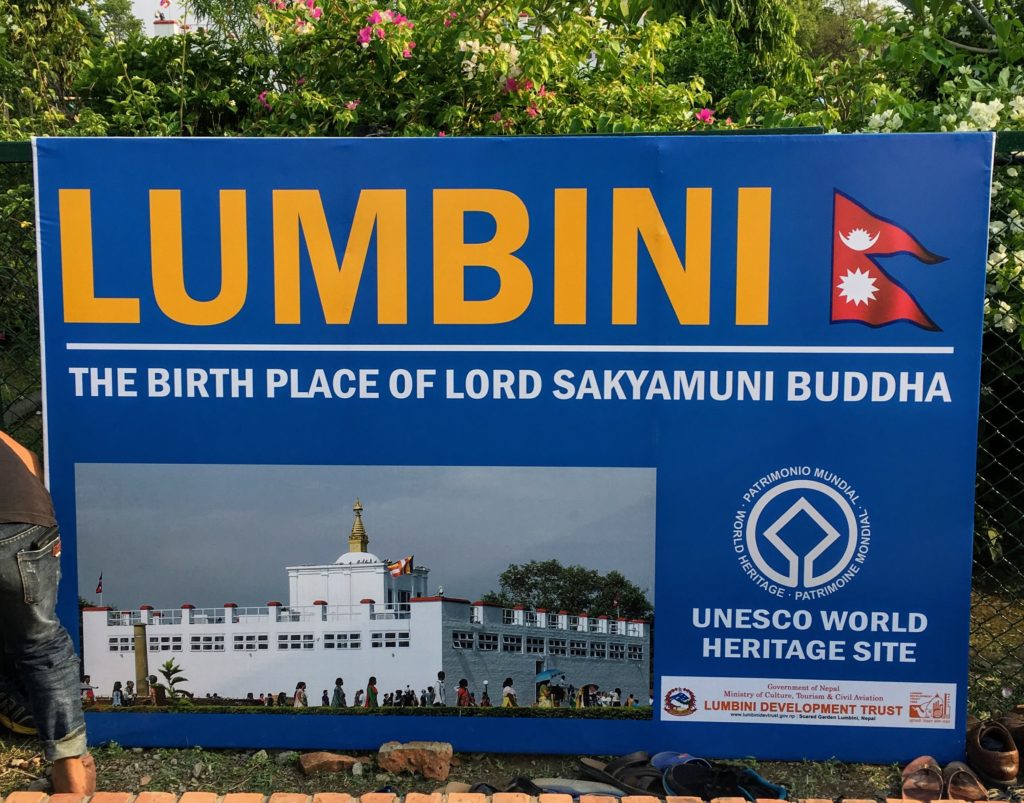
Lumbini - The Birthplace of the Buddha
Lumbini, Nepal is a Buddhist pilgrimage site where Siddhartha Gautama was born in 623 B.C. He later became Gautama Buddha or the Buddha himself and founded Buddhism.
The central attraction of Lumbini is the Maya Devi Temple, which houses the exact location where Queen Maya Devi gave birth to Siddhartha Gautama. The temple also includes a pillar constructed by India’s Emperor Ashoka in 249 BC, which contain inscriptions testifying the location as the birthplace of the Buddha.
Additional archeological excavations in the area found Buddhist stupas and monasteries dating back centuries. They are some of the earliest Buddhist pilgrimage remains and are protected by the Nepalese Government within the Lumbini Development Area.
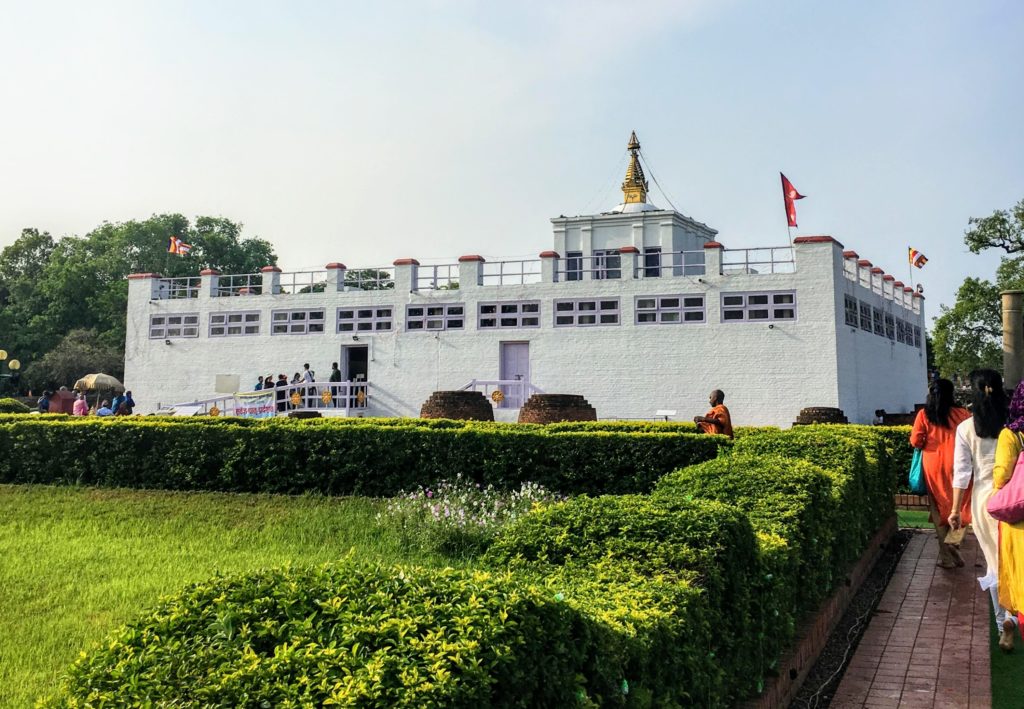
Where to Stay in Lumbini - the Korean Monastery
During my visit to Lumbini, I stayed in the Korean Monastery at the recommendation of another backpacker.
Upon entering the grounds of the Korean temple and monastery in Lumbini, I was blown away by the beauty of it. Colorful lanterns hung across the entire length of the property, lining the main walkway that led to a colossal temple. The monastery dorms created a border around the property, highlighting the well-kept grounds even more.
For 500 rupees ($4 USD) per night, visitors got a thin futon in a dorm room, with an attached bucket shower area, and three meals per day. Water and tea was also always available. Example types of food that were served assembly-line style during meals there include rice, kimchi, bitter gourd curry, stir fried green beans, radish soup, and raw carrots and cucumbers.
Inside the Korean temple itself, resident monks performed their daily prayer rituals. Meditation cushions were available inside for everyone to use freely to meditate, pray, or just sit and be at peace within the calming ambiance of the surroundings.
For more Nepal travel inspiration check out my other posts about Nepal!
- Decide for yourself which epic trek to embark on – Annapurna Circuit vs Everest Base Camp, which should you trek?
- Pack your bags before you go – The Ultimate Nepal Trekking Packing List
- Be prepared for trekking in Nepal (including the cost of trekking) – 20 Things to Know Before Hiking Everest Base Camp and 20 Things to Know Before Hiking the Annapurna Circuit
- Learn more about Kathmandu and Namche Bazaar
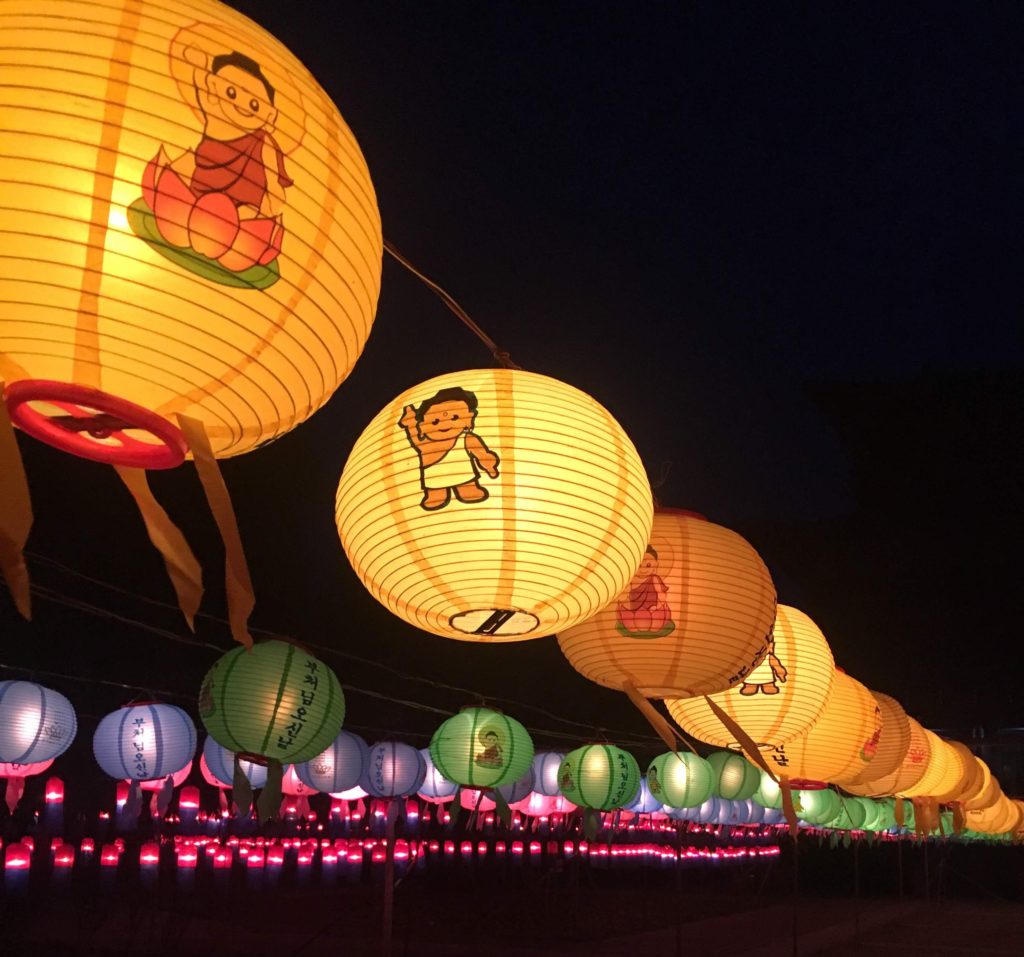
Start at the Maya Devi Temple on Buddha's Birthday
Breakfast at the Korean monastery is served for guests at the same time as the monks: 5:50am. On April 30th I had my breakfast of rice and kimchi mix, radish soup, and yummy potato curry in a hurry before heading to the Maya Devi Temple, where Buddha’s birthday festivities were to begin early in the day.
Behind tough security measures, the inside of the Maya Devi Temple has preserved remnants of the exact location where the Gautama Buddha was born. Inside, there are space for two rows of people, monks lined the inner loop and regular visitors lined the outer. A separate raised platform lets you see the exact location where the Buddha was born. Visitors were throwing cash and coins of all currencies into the ruins, as an offering.
Outside of the Maya Devi Temple there is a holy tree, a holy pool, and a beautifully kept garden. Many sadhu pilgrims were sitting around the tree, as well as other people with different physical ailments asking for money in exchange for a blessing.
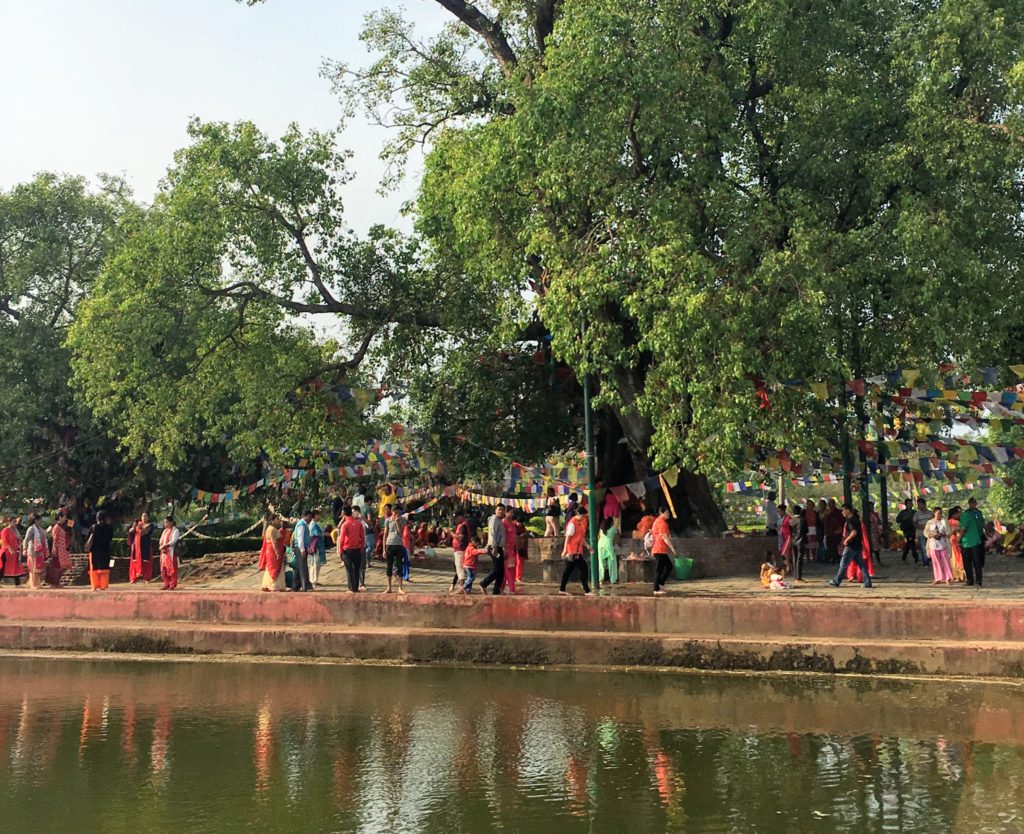
April 30th Celebrations for Buddha's Birthday
From the Maya Devi Temple I started hearing cheerful band music in the distance. Upon exiting the temple complex, I saw a procession of people holding flags from Nepal and other countries walking down the main road. They were followed by a dozen men carrying a statue of the child Buddha on a pedestal, followed by hundreds of monks chanting and playing different musical instruments.
Female monks also formed part of the procession who were singing a lovely tune, followed by a Nepalese Army band. Finally there were people who looked like volunteers or sponsors, holding their promotional banners that took up the rear of the parade.
The entire mood was celebratory – the monks were smiling as they held their hands together in front of them, and they all walked and swayed in unison to the prayers and the music.
The procession was slow enough that I was able to walk past them until I reached the front. The parade was led by a group of young girls, who were throwing yellow flowers over their shoulders to cover the road that the monks were about to walk over. This went on for several kilometers all the way to the Lumbini museum.
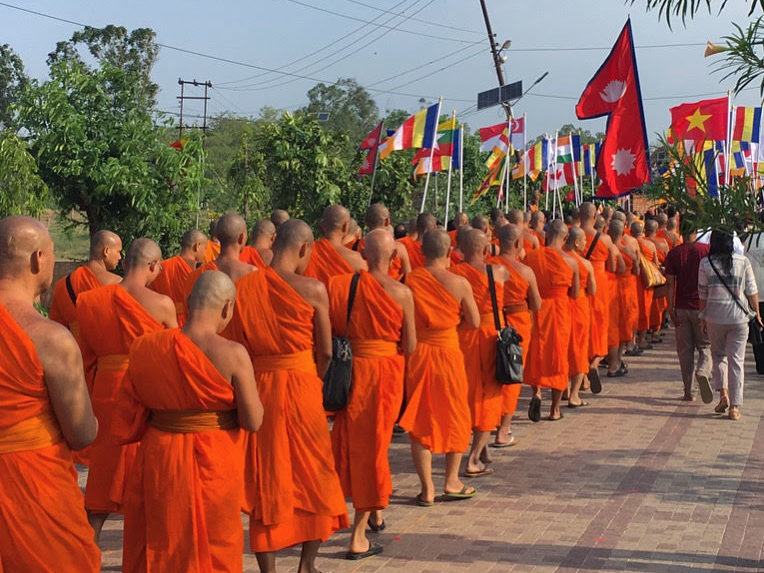
Lumbini's World Peace Pagoda
The World Peace Pagoda was not far from the Lumbini museum where the parade for Buddha’s birthday ended. The pagoda is located in a quiet grassy area, at the opposite end of the Lumbini development area to the Maya Devi Temple.
The massive white stupa was constructed by Japanese Buddhists and has golden Buddhas on all four sides of it. The entire area around the stupa and its attached garden is considered a sacred, quiet zone. Visitors can take off their shoes at the base of the stupa and walk around it in silence.
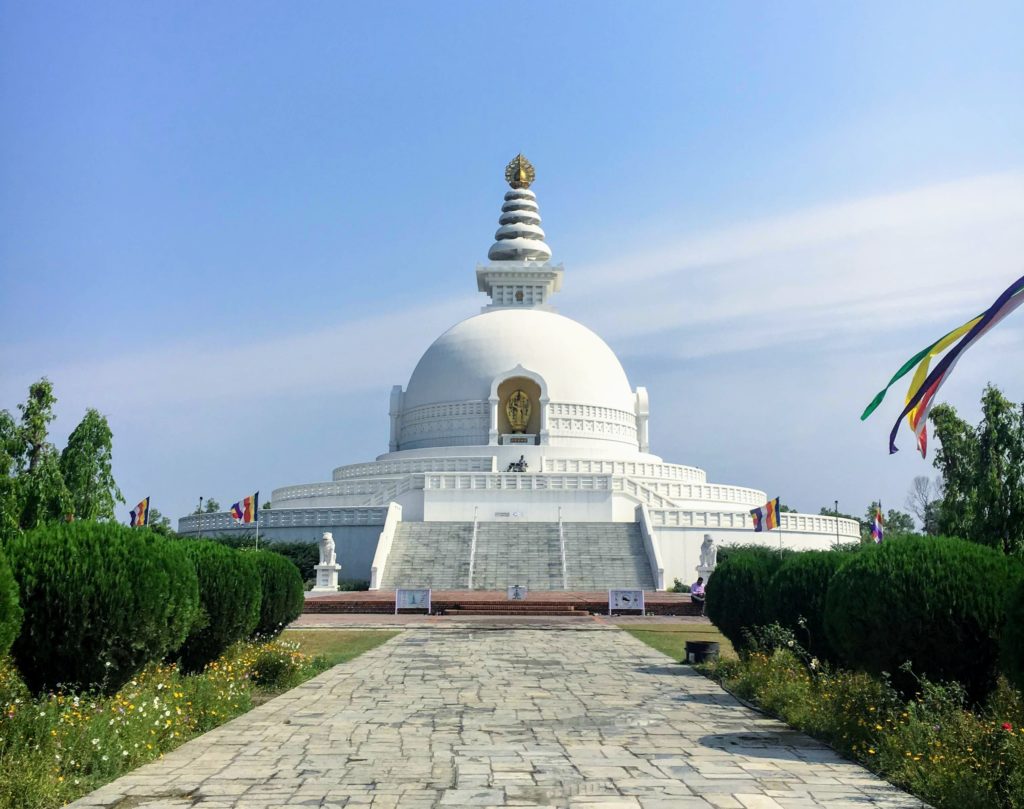
Exploring Lumbini's Temples
After a crowded lunch at the Korean monastery (they provided free meals for all visitors that day), I spent the rest of the afternoon exploring other temples in Lumbini.
Temple styles within Lumbini’s complex represent various countries. Buddhist representatives as well as artists and architects came to Lumbini from places like Vietnam, China, Germany, Austria, Japan, Thailand, Cambodia, Myanmar, and more.
For me, having traveled recently to Thailand and Cambodia, it was interesting to see temples and monasteries that looked like they were teleported straight from these countries.
My favorite was the German temple, also called the Drigung Kagyud Dharmaraja Foundation temple. The Buddhist artwork in the interior and on the exterior of the temple was extremely intricate and I recognized scenes from the story of Siddhartha Gautama. Two massive prayer wheels were outside of the temple, that visitors could spin for good luck.
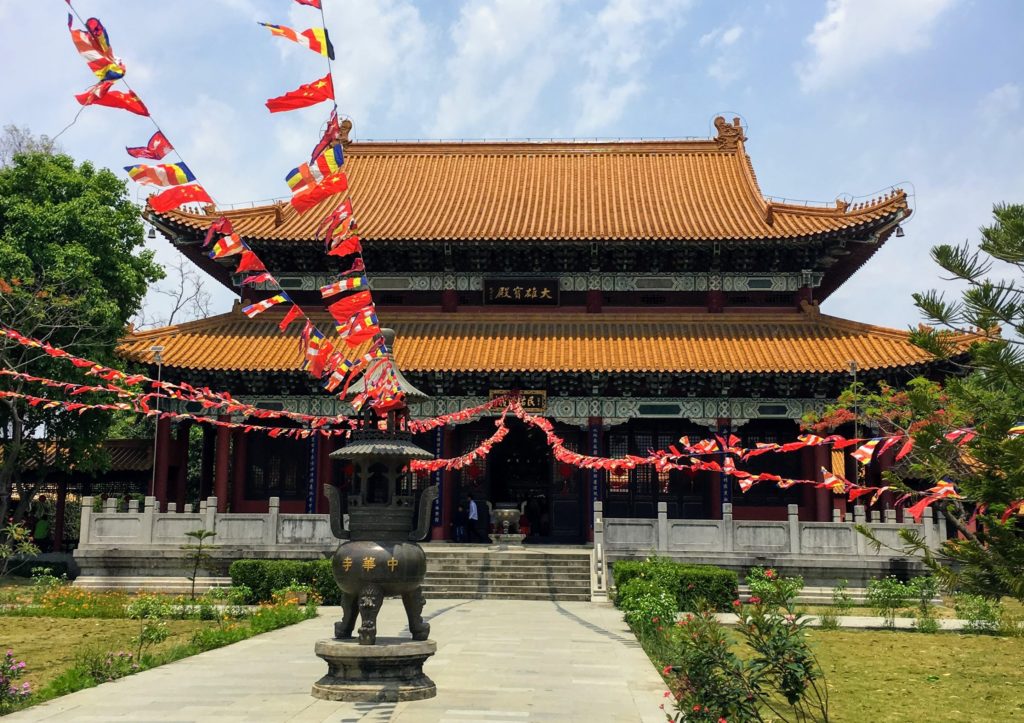
Future "Mecca for Buddhists"?
One of the highlights for me in Lumbini was the vast variety of temples, stupas, monasteries, and other Buddhist religious structures in Lumbini. Art and architecture from all around the world are incorporated into the buildings, so you never get board visiting each and every one!
I experienced a few downsides to Lumbini being such a popular tourist and pilgrimage sight, including large crowds towards the afternoon hours and a bit of a trash problem. People on motorbikes were also constantly roaring down pedestrian-only paths, ignoring signs that threaten a fine for doing so.
Lumbini has some room to grow before becoming a “Mecca for Buddhists”, but I could sense that it was a work in progress, and everything was moving in the right direction. Many new temples were under construction, and there were many open lots for other monasteries and temples to be constructed in the future.
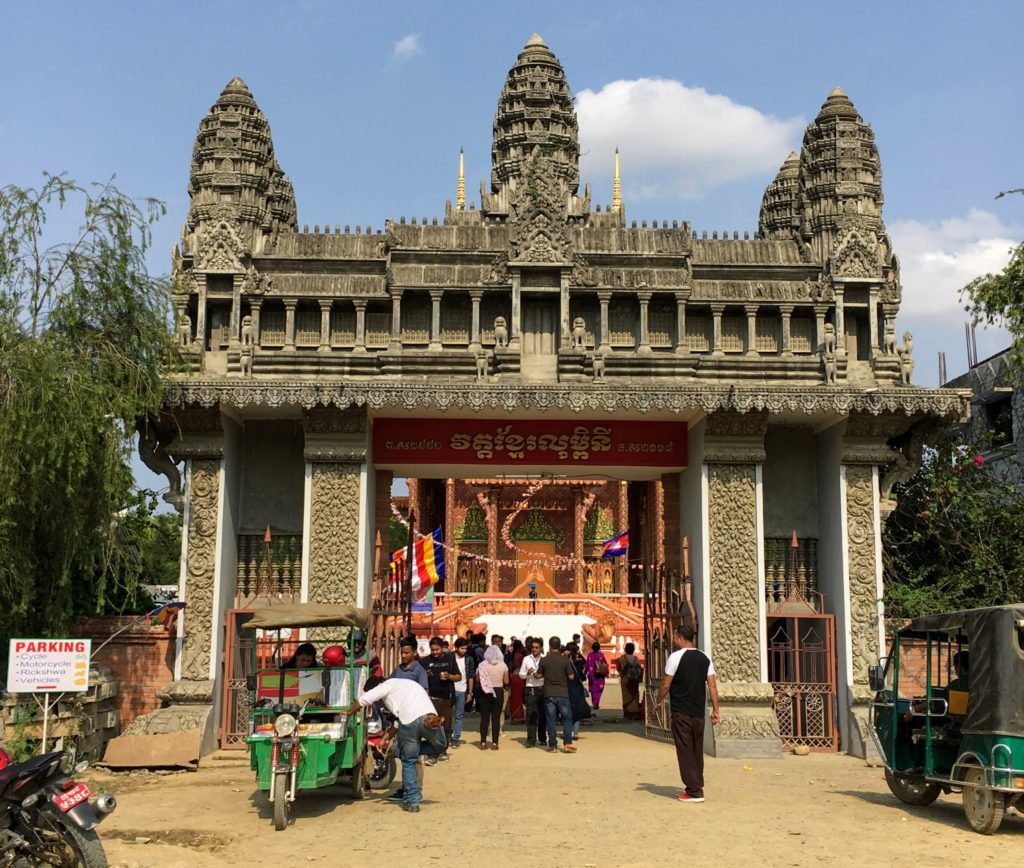
Summary of my visit to Lumbini, Nepal
Overall I was extremely pleased with my experience in Lumbini, and I think it would be a great place to spend a week or so just to be at peace with yourself and your surroundings, especially at the Korean Monastery.
Many people I met there were planning on joining a 10-day silent Vipassana meditation course, which are offered at two separate locations in Lumbini. For visitors coming to purely sightsee in Nepal, about two full days in Lumbini was enough for me to see all of the temples on the property.
I would highly recommend visiting Lumbini for anyone who is looking for a spiritual or religious experience (just be sure to go around the temples early in the morning), as well as to learn about the history of Buddhism, or about different forms of Buddhist art and architecture.
Are You Prepared For Your Next Travelventures?
- Book Your Flights – To find the cheapest flights, flexibility is key. I use both Google Flights and their low fare calendar, and Skiplagged, which uses airfare loopholes to get the lowest prices.
- Book Your Accommodation – Check out Booking.com for the largest selection of accommodation around the world. For backpackers, Hostelworld.com is also a favorite.
- Check Visa Requirements – From E-Visas to Visas-on-Arrival, iVisa has all the info on country visa requirements. If one is required, you can order one hassle-free through their site.
- Book Local Excursions – Don’t miss out on world-class experiences by booking tours and tickets online, ahead of your arrival. GetYourGuide has fun experiences from all around the world, and Klook specializes in Asian destinations.
- Pack Your Essentials – Check out my posts about Long Term Travel Gear, and Carry-On Luggage Packing Essentials!
- Read my Travel Resources page for more budget travel tips.

